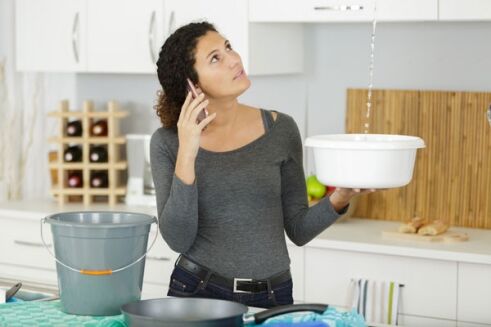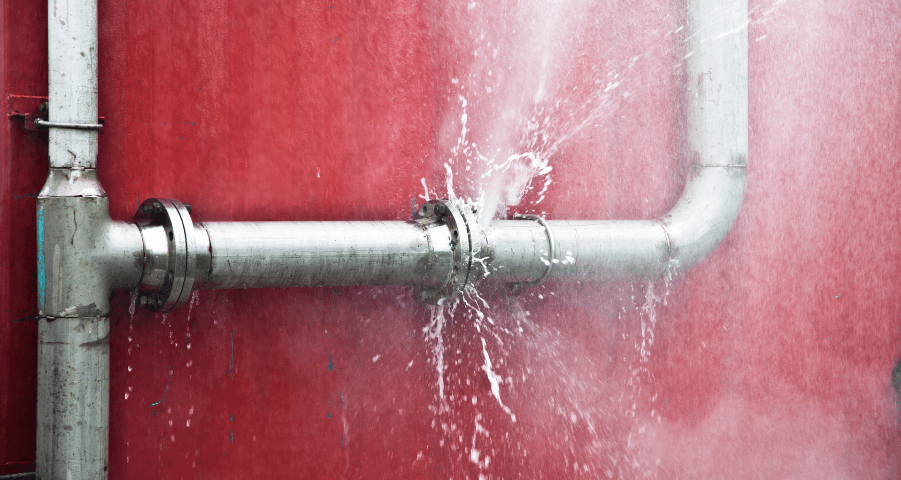Critical Solutions to Follow Until Professional Help Arrives
Critical Solutions to Follow Until Professional Help Arrives
Blog Article
They are making a few great pointers regarding Expert Tips for Emergency Plumbing Repairs in general in the article following next.

Plumbing emergencies can strike at any time, triggering stress and anxiety and prospective damages to your home. Whether it's a burst pipeline, a blocked drainpipe, or a leaky tap, recognizing exactly how to take care of the situation up until a specialist plumber shows up can conserve you from further problems. This write-up gives crucial emergency plumbing ideas to assist you minimize damages and reclaim control during a plumbing dilemma.
Switch off the Water Supply
The first step in any type of pipes emergency situation is to shut down the supply of water. For localized concerns, such as a dripping tap or toilet, turn off the valve near the component. When it comes to a significant leak or ruptured pipeline, locate your home's main water shut-off valve and turn it off right away. Understanding the place of these valves beforehand can save important time during an emergency.
Address Small Leaks with Short-lived Repairs
Little leaks can quickly come to be considerable problems if left unchecked. Make use of these momentary fixes until expert aid arrives:
While these repairs aren't long-term, they can help decrease water loss and damage.
Unclog Drains Securely
A clogged drainpipe can be a frustrating and unpleasant concern. Here's how to tackle it:
If these approaches don't function, prevent using too much pressure, as it may worsen the clog.
Handle Overflowing Toilets
An overflowing bathroom can create instant mayhem. Here's what you should do:
Shut down Your Hot Water Heater
In certain emergencies, such as a burst pipeline, it's important to shut off your water heater. This avoids overheating or damage to the system when water quits moving. Switch off the power supply to the hot water heater (electrical or gas) and allow it cool down to prevent possible hazards.
Briefly Quit a Burst Pipe
A burst pipeline can lead to significant water damages in mins. To mitigate the issue:
Call a specialist plumbing professional instantly to address the issue permanently.
Manage Frozen Piping Very Carefully
In cooler environments, icy pipelines are a common emergency. If you suspect a frozen pipe:
Protect against Additional Damage
Taking fast activity to reduce damage can conserve you time and money in the long run. Below's just how:
. Have an Emergency Pipes Set
Prepare a basic pipes emergency set to handle small problems properly. Your set should consist of:
Having these devices available can make a significant distinction in your capacity to handle emergency situations.
Know When to Call an Expert.
While quick fixes can aid briefly, particular plumbing problems call for instant specialist attention. Call a plumbing professional if:.
Immediately contacting an expert makes certain the issue is fixed properly and protects against further problems.
Verdict.
Pipes emergencies can be overwhelming, however with the appropriate knowledge and tools, you can manage the circumstance successfully till help shows up. By shutting off the water, addressing little leaks, and utilizing momentary repairs, you can lessen damages and keep your home safe. Remember, these suggestions are short-term services; always speak with a certified plumbing to handle the root cause of the problem. Prep work and fast reasoning are your finest allies in any type of plumbing emergency.
Emergency Plumbing: Quick Steps to Minimize Damage Before Help Arrives
Welcome to ?our? helpful guide,? “Emergency Plumbing: Quick Steps ?to ?Minimize Damage ?Before Help? Arrives”. Plumbing emergencies can lead to unanticipated ?stress and potential property damage if not addressed promptly and effectively. However, ?while professional help is definitely essential? in? such situations, there are things that you ?can ?do ?to minimize damage ?before a? plumber arrives. In this detailed, informative,? and easily? understood post, we provide you with practical,? expert advice on ?how to mitigate the? impact of common? plumbing ?emergencies. From identifying? the problem? to implementing temporary fixes,? this ?guide ?can equip you? with the? knowledge? you ?need to ?act swiftly and ?decisively,? potentially saving you? a lot ?of time, ?money and heartache. Imbibe these? critical insights and turn them into action, because when it comes? to plumbing emergencies, every minute? counts!
Understanding the ?Urgency of Plumbing Emergencies
Regardless ?of how well-maintained your? plumbing system ?may be, emergencies can happen when least expected. ?Burst pipes, ?leaks, blocked drains, gas ?leaks, and water heater issues are just samples of circumstances that call for immediate professional ?help. What? do you do when such emergencies occur? Most? importantly, how do? you minimize damage before help arrives?
First? and? foremost, stop the water flow, this ?is the? most immediate way to prevent extensive water damage. Locate your ?home’s main water valve and turn it off. If? the emergency is? a localized one,? like a? sink overflow, turning off the specific fixture’s valve under the sink will suffice. Secondly, ?switch off the electricity. ?This is ?crucial, especially ?when the? water ?leak is ?close to electrical? outlets or appliances. Lastly, clear the area; move furniture, rugs, ?and other valuables out of the ?way, especially if they are at risk? of water damage.
Recognizing Common? Signs ?of Plumbing Issues
Recognizing plumbing issues as soon as? they emerge can ?save you? from pricey repairs and potential ?water damage. For ?instance, slow drainage might suggest a blockage in? your pipes that,? if not dealt with, could result in ?a damaging overflow. Keep an eye out for? continuous dripping from your faucet even when? turned off ?- this is a clear ?sign of a faucet? issue that’s wasting water and increasing your? bill. A toilet that frequently runs? or takes a ?long time to ?refill could hint at an inner? part malfunction, while ?unusual? sounds ?- banging, whistling or gurgling – coming from your pipes signal abnormal flow or air in? the pipe.?
Increasing water bills without extra usage is also a sign of a possible leak in the system ?that causes water wastage.? Noticeable water stains or lush patches ?in? your? yard might indicate an outdoor leak. Lastly, low water ?pressure could imply a clog, a pipe problem, or even a city supply issue. Recognizing ?these signs early can provide you with ?a valuable? opportunity to address minor issues before ?they exacerbate ?into major plumbing emergencies. ?Signs? of? Common Plumbing Issues: Slow drainage Continuous dripping from? faucets High? water bills Unusual noises from ?pipes Lush patches in? yard Low water ?pressure
Preparing? an Emergency Plumbing Kit for Quick Action
A well-equipped? emergency? plumbing kit can mean the difference? between a minor ?inconvenience ?and? a? significant home ?disaster. To be? prepared for unexpected plumbing? emergencies, your ?kit should carry all the ?essentials that can help you limit ?the damage before professional help? arrives. The ?golden rule is start with? the basics? and then ?add tools as you navigate through different plumbing problems. Following are the core essentials you must? have? in ?your emergency ?plumbing kit:
Plunger: ? This ?is a versatile tool? that can clear most minor clogs in ?sinks, toilets and? drains. Pipe Wrench: Essential ?for tightening and loosening? glazed? pipes. Pliers: Handy for gripping? small objects. Screwdriver ?Set: Used for ?removing ?or? tightening different fixtures. Teflon ?Tape: ? Can be wrapped around? fittings? and joints to ?prevent minor? leaks. Bucket: A simple bucket can be used for multiple purposes from catching leaks ?to carrying tools or storing? removed? parts. Effective DIY Methods to Minimize Damage Before Help Arrives
When you promptly recognize a plumbing emergency, you can employ several DIY methods ?to mitigate potential harm while waiting for a professional plumber. ?Initially, it’s crucial? to ?turn? off the water supply ?to ?stop further flooding. If you’re encountering a local problem—like a? record-breaking overflow? from your toilet—its dedicated ?water valve? will usually be ?located ?behind the fixture. However,? if the? issue seems to be? more pervasive, you can cut your ?whole house’s water supply,? typically found near ?your water meter or at the? street.

I'm very drawn to Expert Tips for Emergency Plumbing Repairs and I hope you appreciated the entire blog posting. Do you know about another person who is very much interested in What to Do While Waiting for an Emergency Plumber? Feel free to share it. We cherish your readership.
Click Here Report this page